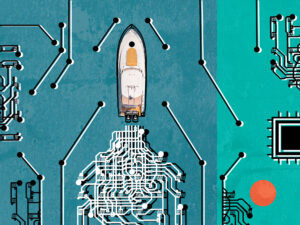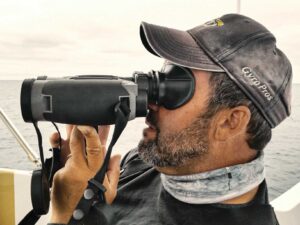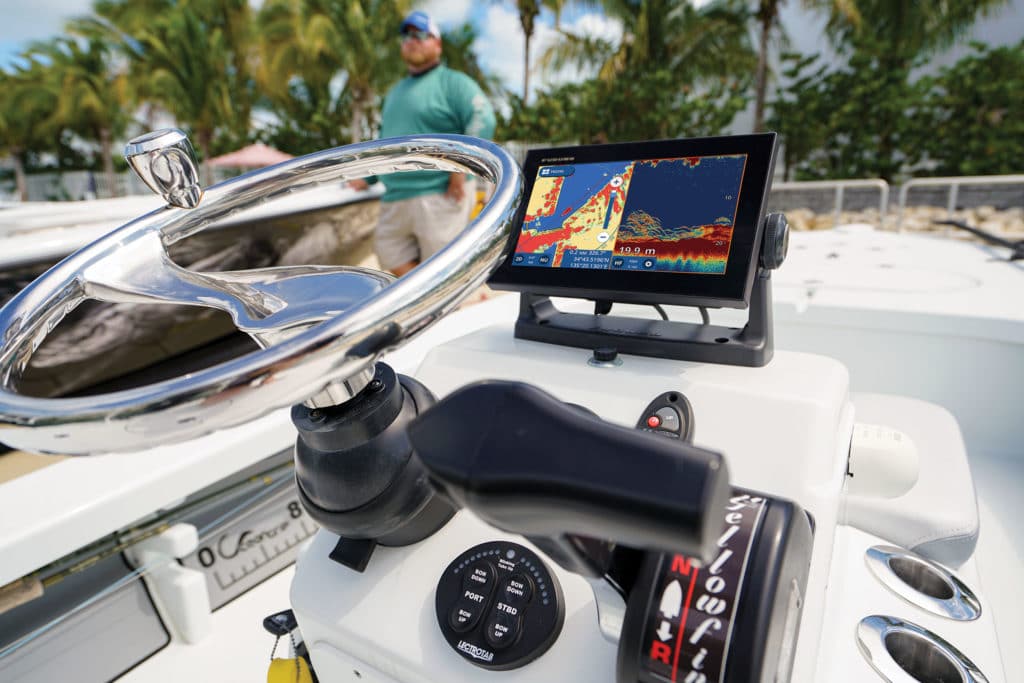
Joey Owens fishes the bays and harbors, kelp beds and reefs of the Southern California coast from his 16-foot aluminum skiff. His entire electronics arsenal consists of a single Garmin Striker 4, featuring a chirp fish finder and GPS/chart plotter. It serves him well, leading him to phenomenal scores of calico bass, sand bass, spotted bass, California halibut, and even thresher sharks.
“It does everything I want for finding structure, bait and fish,” Owens says. “I really don’t need anything more for the kind of inshore fishing I do.”
In an age when big-screen multi-function displays are all the rage, so-called combo units don’t receive as much attention from saltwater anglers. However, these machines are among the bestselling models from major brands such as Furuno, Humminbird, Lowrance, Simrad, Garmin and others.
As Owens has discovered, combo models are affordable, easy to install, a cinch to use, and effective, not only for inshore fishing success, but also some offshore applications.
Combo Defined
How do manufacturers differentiate a combo from an MFD?
“In our lineup, we consider the Element series to be a combo unit rather than an MFD,” says Jim McGowan of Raymarine. “In our book, combo units have two primary features in them: a GPS/chart plotter and a sonar. Typically, the combo units don’t offer quite as much networking or expansion capability as a traditional MFD, like Raymarine’s Axiom.”
Furuno’s Jeff Kazlauric offers a slightly different take regarding the definition of a combo. “A combo unit contains two of three main features (GPS/chart plotter, fish finder and radar) built in,” Kazlauric says. “For example, our GP1871F and GP1971F models are considered combo units because they are GPS/chart plotters/fish finders.”
With that said, the traditional definition of a combo unit is evolving today to also include limited networking possibilities, as we’ll discuss a bit later.
Sized to Fit
Combo units tend to go on smaller boats, where helm space is usually limited. But that doesn’t mean all combo units are small.
In Garmin’s lineup, for instance, combos range from the Garmin Striker 4, with a 3½-inch color screen and push-button operating system, to the Garmin EchoMap Ultra 126sv, with a 12-inch color touchscreen with a key-assist function.
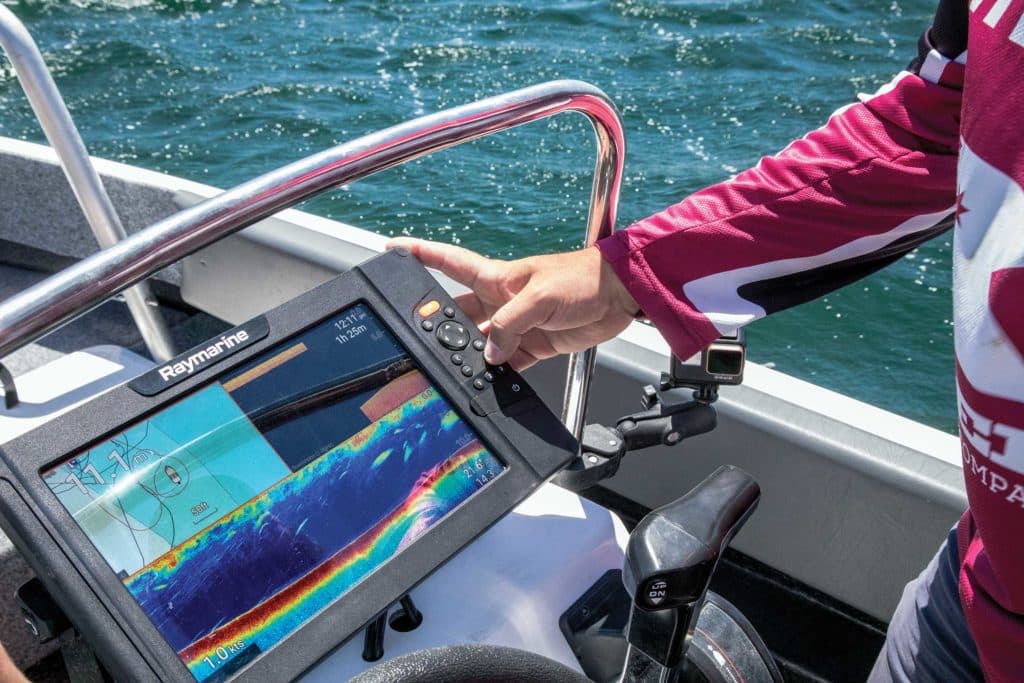
On the upper end, 9 to 12 inches seems to be the largest display available in a combo model from most major brands. In the Simrad Cruise line of combo units, for example, the biggest screen is 9 inches. However, you can get a Lowrance Elite Ti2 combo or Raymarine Element combo with a screen as large as 12 inches.
Cost-Effective Choice
“Combo units generally hit a more affordable price point for shoppers because these models are built to have everything you need, and nothing that you don’t,” McGowan explains. For example, a Raymarine Element 12HV starts at $1,799.99, while a Raymarine new-generation Axiom+ 12-inch MFD starts at $2,499.
A lower price doesn’t mean lower quality, McGowan points out. “There are certain features we won’t skimp on, like a high-resolution, bright, daylight-viewable display,” he says.
Easy Installation
Another advantage of combo units lies in easier installation versus MFDs. Putting in a combo model is usually simple because there are fewer things to mount, connect and configure than with a networked MFD.
Most combo units have a built-in GPS receiver, so you don’t have to mount a separate antenna and route the cable. All of this makes the installation process less expensive, as many units can be installed as do-it-yourself projects. Yet even if you turn over the project to a marine electronics installer, it will still take less time than a fully networked MFD, and that translates to lower cost.
All-in-One Transducers
In addition, many combo units come with multifunctional transducers for greater fish-finder ability.
Garmin’s EchoMap Ultra 106sv and 126sv combo models, for instance, both include a GT54UHD-TM transom-mount, all-in-one transducer with traditional chirp and Ultra High-Definition ClearVu and SideVu scanning sonars.
Similarly, each Lowrance Elite Ti2 combo unit comes with an Active Imaging 3-in-1 transom-mount transducer that features chirp, SideScan and DownScan.
A single transducer that gives you more ways to find structure and fish saves the cost of buying multiple transducers to do the same things and further simplifies the installation.
Network Possibilities
As discussed earlier, combo models have traditionally been self-contained in terms of features and function, but newer models are challenging that definition. The line between combos and MFDs have started to blur over the years.
In the past, all units that could do networking were considered MFDs, but now some combo units have limited networking functionality, so that definition doesn’t apply anymore.
As an example, Garmin’s EchoMap Ultra series combos offer built-in support for networking with Panoptix sonars and Panoptix LiveScope scanning sonar with real-time views of structure and fish.
These units also feature NMEA-2000 connectivity for networking with heading sensors, autopilots, digital switching, and Fusion-Link audio systems.
In another case of expanding functionality, Simrad’s GO9 XSE and GO12 XSE combo units can be networked to serve as displays for Simrad’s Broadband 3G/4G and Halo pulse-compression radar systems for safer navigation.
The evolving nature of combo units makes them even more versatile. Yet ultimately, as Joey Owens has learned aboard his 16-foot skiff, you don’t always need a big, expensive MFD with lots of extra features. Sometimes, a compact combo unit is just the right machine for the job.
New Electronics
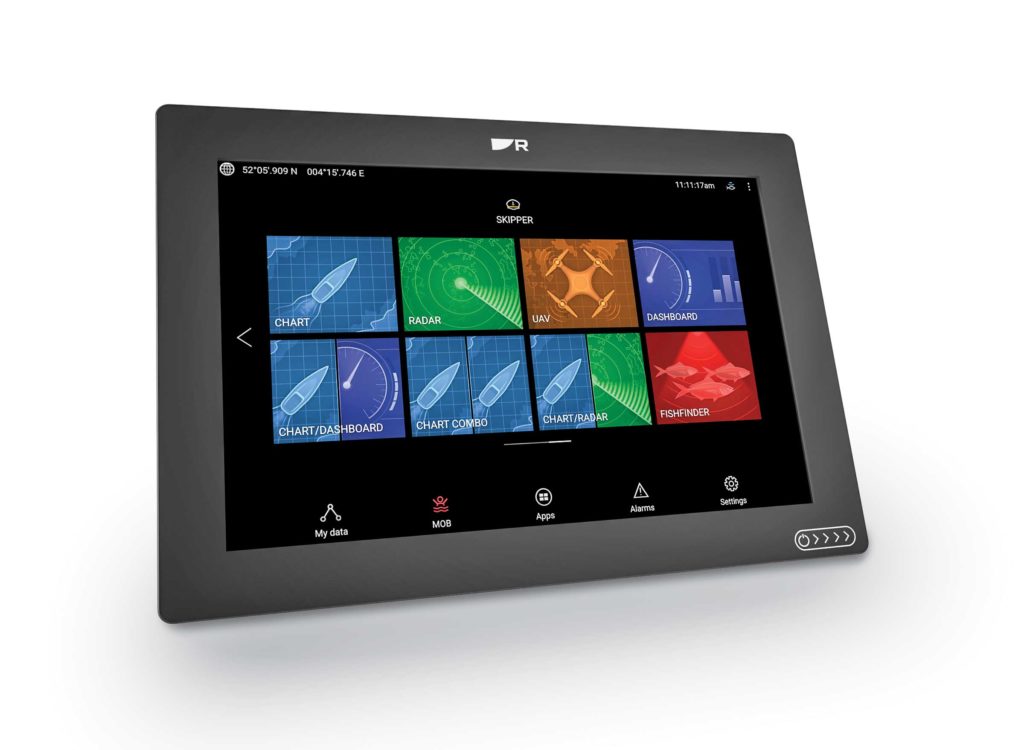
Raymarine’s new Axiom+ multifunction displays are available in 7-, 9- and 12-inch display models, and offer quad-core processors, four built-in sonar channels, and HydroTough nano-coated screens that enable touch control in all conditions. Complementary new LightHouse charts are derived from official hydrographic sources. Starting at $749 for Axiom+ models, $79 for LightHouse charts; raymarine.com
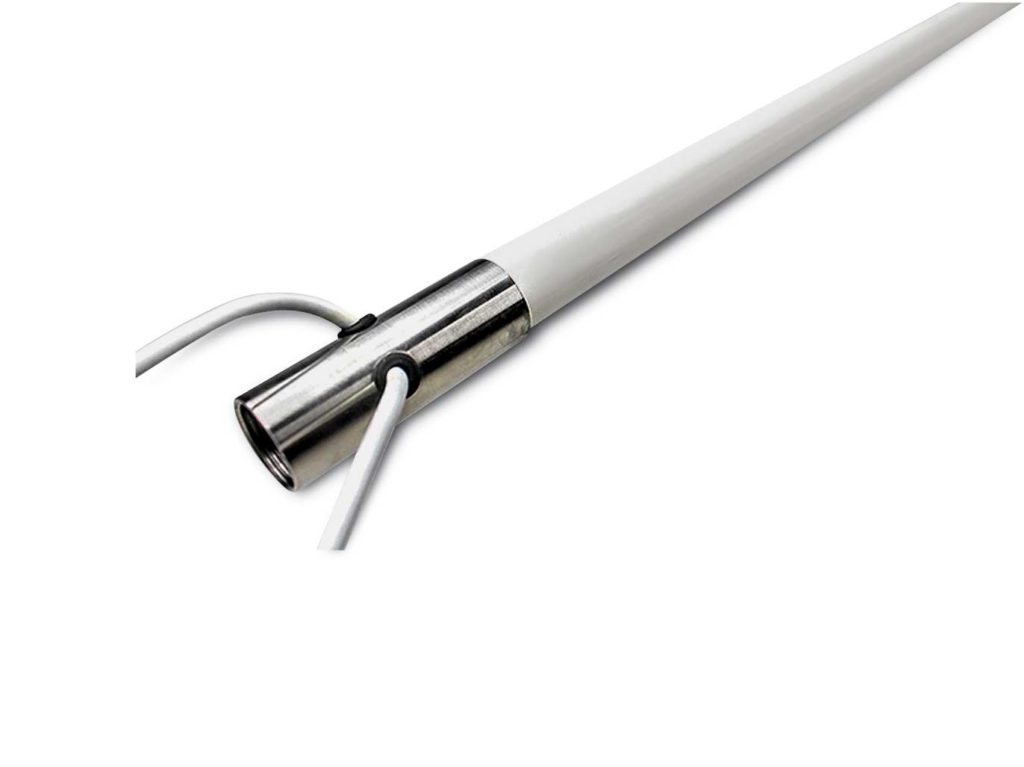
AirWave Marine’s Combo SiriusXM and AM/FM radio antenna is available in 4- and 8-foot lengths. It’s simple to install and connect with AirWave’s ProConnect Cable System. The fiberglass tube is built to withstand impact and continual motion. A stainless-steel ferrule threads onto a standard marine mount. Inside the antennas, pure-copper elements optimize audio-signal reception. Available in white or black. Starting at $199; airwavemarine.com
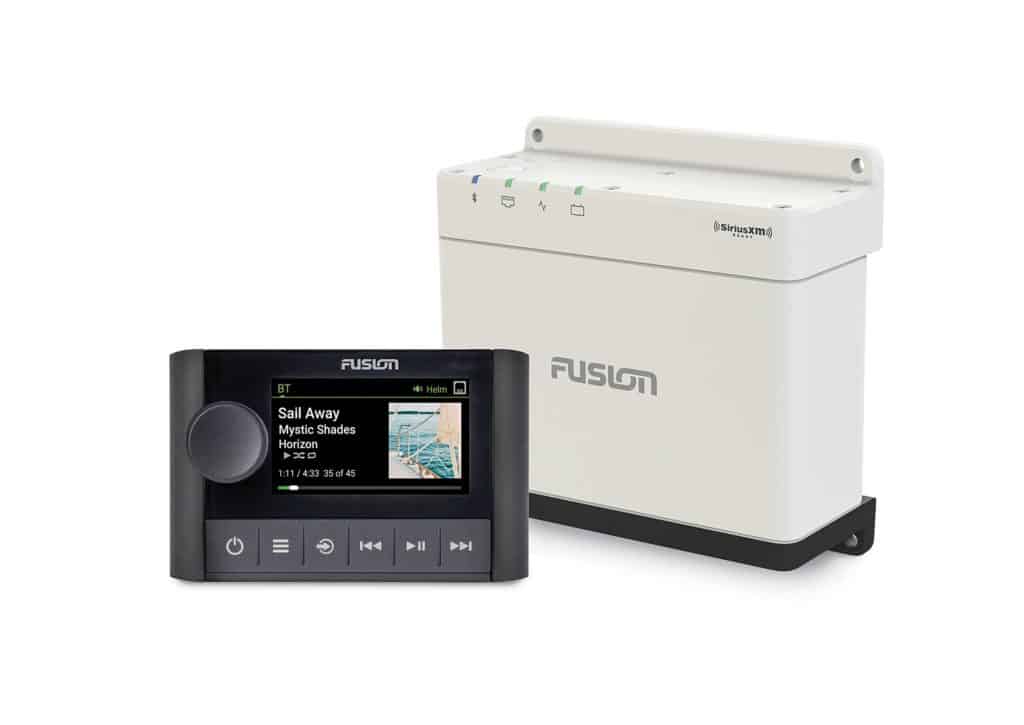
Fusion’s Apollo WB670 hideaway system and ERX400 wired remote eliminate the need for a stereo source unit on the dash. Controlled through a compatible MFD or with the ERX400 wired remote, the WB670 inherits key audio features of the Apollo RA670, including digital signal processing. It mounts behind the helm or in a center console. $449.99 for the WB670, $229.99 for the ERX400; fusionentertainment.com

